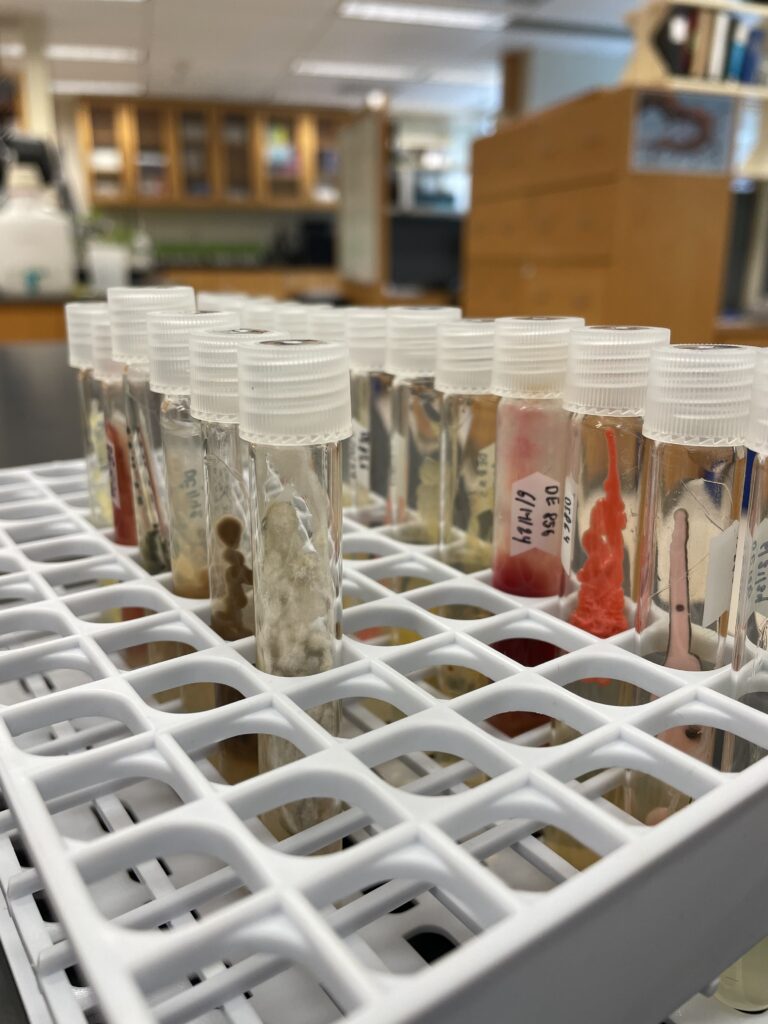Culturing Fungi
In the Bradshaw lab, we put a focus on culturing fungi from a variety of understudied biomes, with a particular emphasis on marine fungi and plants, which are notably under-researched. Our lab utilizes diseased plant material from the Insect and Plant Diagnostic lab, exploring the diverse range of culturable fungi within these samples. Employing high-throughput culturing techniques, our team is dedicated to culturing fungi that have never been cultured before, thereby contributing to the expansion of fungal knowledge and biodiversity. All cultures derived from our research are deposited in the Larry F Grande Mycological Herbarium, making them accessible to researchers worldwide. This contribution is significant as fungi play crucial roles in nutrient cycling and ecosystem functioning, acting as parasites and symbionts. Yet, the known diversity of these organisms is just a fraction of what exists in nature.
The study of marine fungi is of particular interest to our lab. Historically, the diversity of marine fungi was underestimated, with initial research focusing on easily culturable species from nearshore environments. However, advances in sequencing technologies have unveiled a hidden and vast diversity of marine fungi. These fungi inhabit various habitats in the marine environment, ranging from mutualistic relationships with aquatic plants to saprotrophic fungi in deep-sea hydrothermal vents.Marine fungi are found on a multitude of substrata, indicating their extensive adaptation to different environmental conditions and geographies.
Despite their ecological importance, our understanding of marine fungi remains limited, with a small fraction of the estimated species described so far. This gap in knowledge underscores the importance of our lab’s focus on culturing and studying these organisms. By exploring this largely untapped area, we aim to shed light on the diversity and ecological roles of marine fungi, contributing to a more comprehensive understanding of marine ecosystems.
